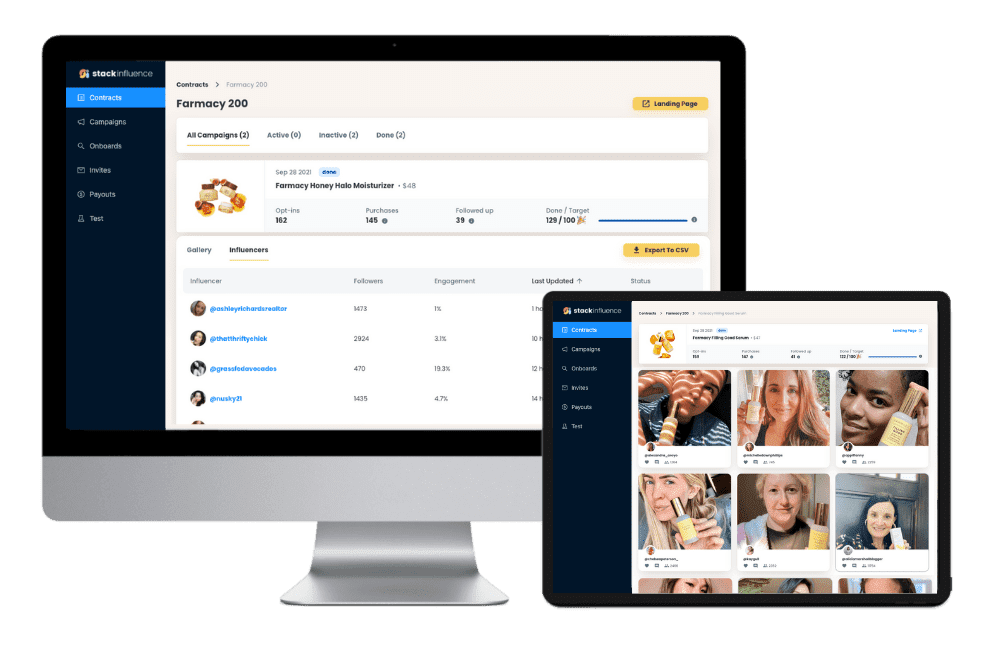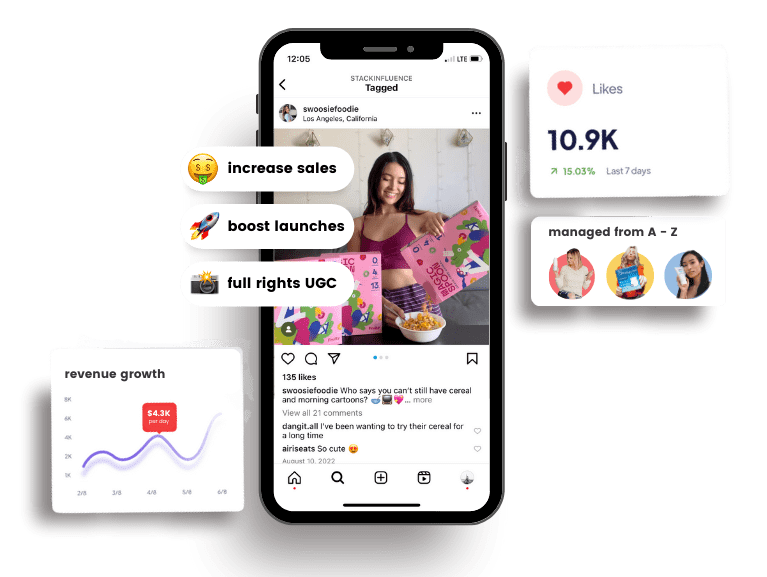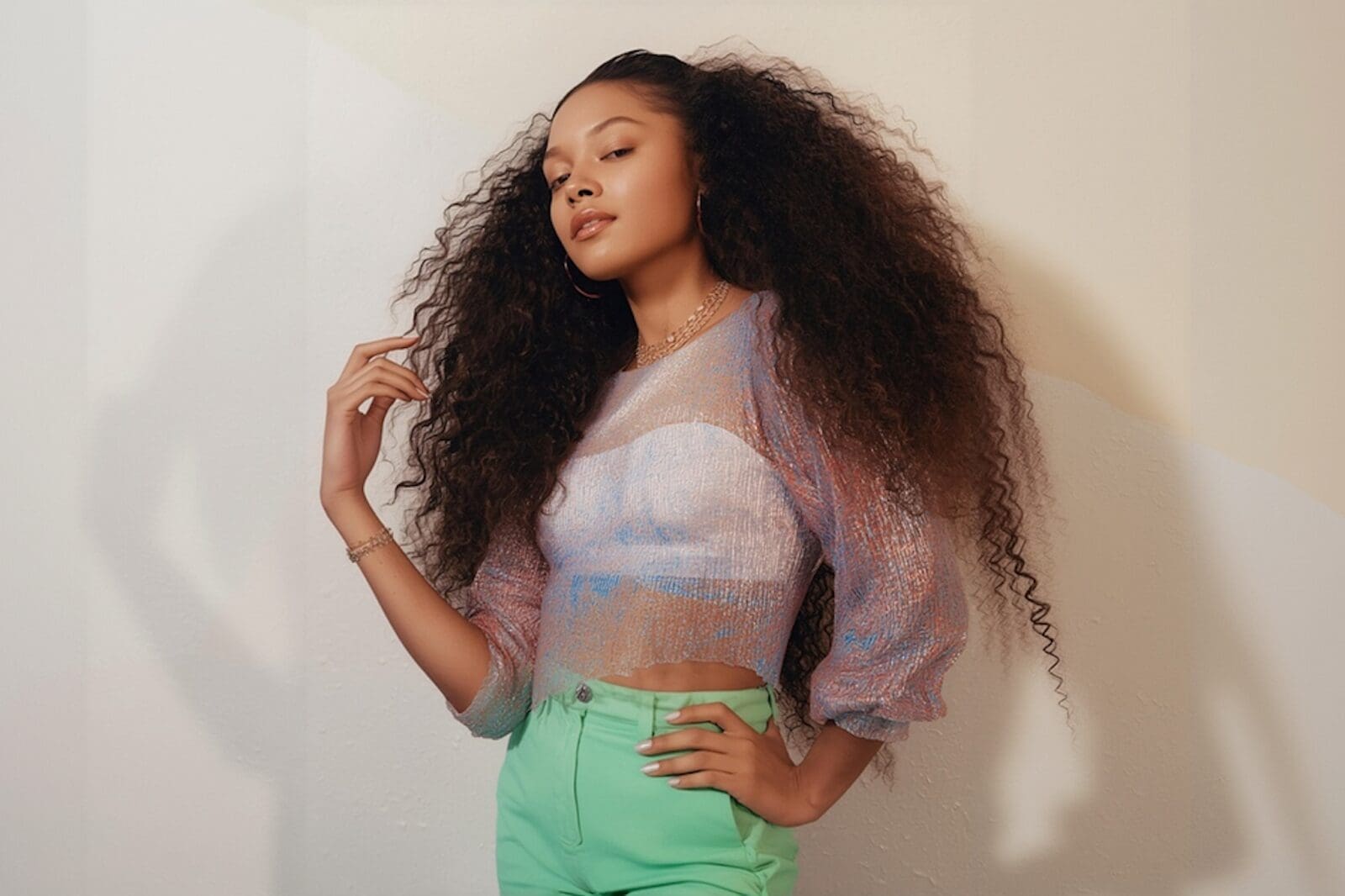How to Be a Hair Influencer
20th
October, 2025
Influencer Marketing
Amazon Marketplace
Artificial Intelligence
TikTok Tips
Becoming a hair influencer is about more than having great hair – it’s about sharing your passion for haircare and styling in a way that inspires and educates others. From Instagram feeds filled with stunning braids to TikTok tutorials on achieving perfect curls, hair influencers are shaping trends and helping followers feel confident about their locks. The good news is you don’t need to be a celebrity to succeed; in fact, many hair content creators start out as micro influencers (with a few thousand followers) and can still make a big impact. In the beauty industry, even small-scale influencers drive real engagement and sales – 74% of Gen Z (and 66% of millennials) have bought beauty products based on social posts by influencers, and brands are eagerly collaborating with micro influencers to fuel e-commerce growth. This means there’s plenty of opportunity for up-and-coming hair gurus to carve out a niche and even work with companies (from indie haircare startups to Amazon sellers) through influencer marketing.
In this comprehensive guide, we’ll walk you through what it means to be a hair influencer and provide step-by-step tips on how to become one. Whether you’re an aspiring creator starting from scratch or an established influencer looking to switch into the hair niche, these insights will help you build your brand, grow your following, and monetize your content – all while keeping it fun and authentic.
What Is a Hair Influencer?
A hair influencer is a content creator who focuses on hair-related content – think hairstyling tutorials, haircare tips, product reviews (shampoos, conditioners, styling tools), wig installs, and before-and-after transformations. They share their content primarily on visual-driven social media platforms like Instagram, TikTok, and YouTube, where fans flock to see creative styles and honest advice. Some hair influencers are professional stylists, while others are self-taught enthusiasts who have built trust by showcasing their personal hair journeys.
What sets hair influencers apart is their ability to create user-generated content (UGC) that resonates with a specific audience. Their posts might include everything from quick “how-to” videos on a trendy braid, to detailed blog write-ups about overcoming frizzy hair. Over time, a dedicated hair influencer becomes a go-to resource for hair inspiration and solutions. They often engage closely with their followers – answering questions like a friend would – which makes their recommendations highly trusted. In fact, the hair niche (part of the larger beauty community) thrives on this personal touch and authenticity. Brands have noticed too: many beauty and haircare companies now prefer partnering with relatable micro influencers for product promotions, since their relatable content and tight-knit audiences translate into higher engagement, trust, and even better ROI for brands (including online e-commerce sellers).

Unlock the Power of Micro Influencers and Elevate your Brand Today!

Why the Hair Niche Is Perfect for Micro Influencers
If you’re starting out as a hair influencer, you’ll likely be a micro influencer – and that’s actually a great thing. Micro influencers (generally creators with a few thousand up to ~100k followers) are powering a revolution in influencer marketing, especially in beauty and hair. Here are a few reasons why starting small in the hair niche can be an advantage:
-
-
Authenticity & Trust
-
Micro influencers often come across as real people and peers, not distant celebrities. It’s no surprise that 82% of consumers say they’re more likely to follow a micro influencer’s recommendation over a recommendation from a larger influencer. This authenticity gives you serious credibility with your audience. In fact, over half of marketers (56%) report getting better ROI from campaigns with micro or nano influencers than with big influencers – largely because consumers trust smaller creators more. In the hair niche, trust is gold: if your followers believe you genuinely care about helping them fix a bad hair day, they’ll stick with you.
-
-
Higher Engagement
-
What micros lack in sheer reach, they make up in engagement. As follower counts go up, engagement rates typically go down. But with a smaller, passionate following, you’ll likely see a larger percentage of your followers liking, commenting, and sharing your content. For example, on Instagram a creator with ~10k–100k followers might get 3–8% engagement on average, whereas a macro influencer (hundreds of thousands of followers) might only get ~1–2%. That means your posts as a micro influencer could spark 7× more engagement per follower than a mega-influencer’s posts! All those extra comments and DMs on your hair tutorials aren’t just vanity metrics – they indicate an actively interested community that’s more likely to try the products or styles you recommend.
-
-
Strong Community Connection
-
Being smaller allows you to interact more personally. You can respond to nearly every question about how to tame curly hair or which serum you used – something a celebrity with millions of followers simply can’t do. This personal touch helps you cultivate a tight-knit community centered on hair topics (be it natural hair, DIY hair masks, or edgy color transformations). A loyal niche community not only boosts engagement but also word-of-mouth buzz. Fans who feel connected to you will eagerly share your latest hairstyle hack with their friends, organically growing your influence.
-
-
Cost-Effective for Brands (Your Opportunity)
-
Here’s a secret weapon of micro influencers: you’re budget-friendly for brands, which makes them more eager to work with you. Brands can often compensate you with free products or modest fees, instead of the hefty sums they’d pay a big influencer. This means a company can afford to collaborate with dozens of micro influencers for the cost of one celebrity post, getting a wider spread of content without breaking the bank. And those collaborations tend to perform great – it’s common to see 5×–8× ROI on micro-influencer campaigns, compared to ~3×–5× ROI with macro influencers. In practice, that means even as a smaller creator, you can deliver real sales and brand awareness. (For instance, one beauty brand CEO noted that instead of paying $500–$1,000 for a single post from a large influencer, they gave free products to several smaller influencers – and saw higher overall engagement and plenty of content for their marketing in return.)
With these advantages in mind, don’t be discouraged by a smaller follower count. In the hair niche, quality of engagement beats quantity of followers. By being authentic, involved, and strategic, you can punch well above your weight – and brands in the haircare industry know it. Now, let’s dive into how to actually build your presence as a hair influencer.
Step-by-Step Guide: Becoming a Hair Influencer

Becoming a hair influencer doesn’t happen overnight, but by following these steps you can set yourself up for success. Here’s a roadmap from the beginning stages to landing those dream collaborations:
1. Define Your Hair Niche and Personal Style
First, decide what corner of the hair world you want to own. The hair category is broad, so narrowing your focus can help you stand out. Maybe you’re all about natural hair care and celebrating curly/coily textures, or you’re obsessed with creative color dye jobs, or perhaps you do amazing wig installs and styling. You might focus on men’s grooming and hair, or be the go-to for easy everyday hairstyles for busy moms. Pick a niche (or a blend of a couple) that genuinely excites you and fits your expertise. This will become your signature. It’s also okay to evolve your niche over time, but starting with a clear focus helps attract followers who are looking for that specific content. Pro tip: If you’re switching to the hair niche from another area (for example, you used to post mainly about fashion), let your followers know about your passion for hair and start blending hair content into your feed. Gradually pivoting while keeping your personal style consistent will help carry over some of your existing audience.
2. Build Your Expertise (Practice Makes Perfect)
You don’t need a professional cosmetology license to be a hair influencer (though if you have one, that’s a bonus!), but you do need to continuously improve your knowledge and skills. Invest time in learning and practicing: try out new hairstyles on yourself or friends, experiment with different products, and stay updated on the latest hair trends and techniques. The more you experiment, the more tips and insights you’ll have to share. Also, work on your content creation skills. Even the best hairstyle needs good lighting and camera angles to shine on Instagram! Practice taking clear photos of hair from multiple angles, learn basic video editing for tutorial videos, and develop an eye for what looks good on camera (for instance, showing a before/after split-screen for a dramatic reveal). By mastering both hair skills and content creation skills, you’ll be able to produce high-quality content that sets you apart from the crowd and builds your credibility. When your audience sees that you know your stuff – whether it’s explaining the science of hair porosity or flawlessly executing a French braid – they’ll trust and follow you.
3. Set Up Your Online Presence
Now that you know your niche and have some skills to show off, it’s time to establish your digital “home base.” Most hair influencers thrive on visually rich platforms:
-
-
- Instagram: Great for photo posts of hairstyles, short video reels, and Stories. You can create a portfolio-like feed showcasing your best looks, and use Stories for more personal, behind-the-scenes or daily hair care routines.
- TikTok: Ideal for quick, viral-friendly videos – like 30-second hairstyle transformations, product hacks, or before-and-after clips. TikTok’s algorithm can expose your content to lots of new viewers quickly if you hop on trends.
- YouTube: Perfect for longer tutorials and in-depth reviews (e.g. a 10-minute video on how to do a full wedding updo, or a comparison of 5 different curling irons). Many successful hair influencers use YouTube to complement their shorter-form content.
- Blog or Website: This is optional, but having a blog can be useful for detailed write-ups, product lists, and boosting your search engine presence. It also makes you look more professional to brands.
- Instagram: Great for photo posts of hairstyles, short video reels, and Stories. You can create a portfolio-like feed showcasing your best looks, and use Stories for more personal, behind-the-scenes or daily hair care routines.
-
You don’t have to be on every platform; choose the ones that fit your style and where your target audience hangs out. For instance, if you love writing step-by-step breakdowns with photos, an Instagram carousel or blog might be your go-to. If you’re a natural on camera, focus on TikTok and YouTube. Once you decide, optimize your profile on each platform: use a clear, friendly profile photo (perhaps showcasing your own fabulous hair), and write a bio that highlights your niche and personality (e.g. “✨ Curlfriend & DIY haircare lover ✨ Sharing weekly tips for healthy natural hair.📍NYC”). Make sure to include a link – possibly a Linktree or Beacons page – to connect all your platforms or any affiliate shop you have. Consistency in your name/handle across platforms is helpful; try to use the same nickname or brand name so people can find you easily. Finally, set your account to a professional/creator mode if the platform has one (like Instagram’s Creator Account), which gives you access to analytics and other useful tools.
4. Create High-Quality Content (Consistently)
Content is king (or queen!) for influencers. To grow your following, you’ll need to post content that is both valuable and consistent. Valuable content in the hair niche typically means it’s either inspirational (people see a style and go “Wow, I want to try that!”) or educational (they learn something new, like a technique or product that can help their hair). Aim for a mix of content types:
-
-
- Tutorials: These could be quick “how-tos” (e.g. a 1-minute video on doing a fishtail braid) or longer YouTube tutorials. Walk people through the steps – assume your viewer is a beginner and explain clearly. Tutorials establish you as an expert.
- Before & Afters: People love transformations. Show a before (frizzy morning hair) and after (sleek straightened look) using a certain method or product. This can highlight your skill and give credit to products/tools that work.
- Product Reviews & Hauls: Try out hair products (shampoos, conditioners, oils, masks) or tools (straighteners, curling wands, hair dryers) and share your honest thoughts. Be thorough – mention pros/cons, price, and who you’d recommend it for. Over time, your followers will trust your recommendations for what to buy (or avoid).
- Hair Care Routines: Share your morning curly-hair routine, nighttime hair prep, wash day routine, etc. These routine videos or blog posts give insight into how you personally maintain your hair, which fans find relatable.
- Trends & Challenges: Participate in fun trends (like the #HairFlipChallenge or whatever might be trending). This shows you’re in the loop and can also get your content in front of more eyes when people search the trending hashtag.
- Personal Stories: Don’t be afraid to get a bit personal – maybe share your journey of recovering from a hair disaster (like bleaching damage) or how embracing your natural hair boosted your confidence. These stories make you more than just a tutorial machine; they make you human and relatable.
- Tutorials: These could be quick “how-tos” (e.g. a 1-minute video on doing a fishtail braid) or longer YouTube tutorials. Walk people through the steps – assume your viewer is a beginner and explain clearly. Tutorials establish you as an expert.
-
5. Join Micro-Influencer Communities and Platforms
Don’t go it alone – take advantage of platforms designed to connect influencers with brands. There are influencer marketing networks and agencies that specialize in matching micro influencers to companies for campaigns. For example, Stack Influence is a micro-influencer marketing platform that connects everyday content creators with e-commerce brands for collaborations. By signing up on such platforms, you can get offers for things like free hair products to review, sponsored posts, or inclusion in bigger marketing campaigns without having to cold-pitch every brand yourself. Other places to look include influencer marketplaces (like Instagram’s creator marketplace or websites where brands post campaigns and you can apply). Also, consider joining online groups (Facebook groups, subreddits, Discord communities) where micro influencers share opportunities and advice. Being part of these communities means you’ll hear about upcoming influencer programs (for example, a haircare startup launching a new line might announce they’re looking for micro influencers to send PR boxes to). When you join a campaign via a platform, always do your due diligence – make sure the brand is legitimate and the requirements (number of posts, deadlines) are feasible for you. The benefit of these platforms is that they often handle a lot of the coordination and ensure you get what was promised (some even handle payment transactions to make sure influencers aren’t stiffed). By tapping into the wider influencer network, you increase your chances of landing deals and you get to learn from others’ experiences. It’s like having a support system in what can otherwise be a very solo activity.
Also, embrace your unique personality. If you’re goofy and funny, let that shine in your tutorial bloopers; if you’re super research-driven, maybe your niche is busting haircare myths with science-backed info. There’s an audience out there for every style, as long as you’re true to yourself.
Finally, be patient and persistent. Growing as an influencer is usually a slow and steady game, not a viral overnight sensation. You might post a reel that only gets 500 views when you hoped for 5,000. That’s okay. Learn from it (maybe try a different cover image or hashtags next time) but don’t quit. Celebrate small milestones – your first 100 followers, your first comment from someone you don’t know, your first re-share by a follower trying your hairstyle. Those are signs you’re genuinely influencing people! Consistency is what turns those 100 into 1,000 and so on. Some weeks you might feel growth is stagnant – use that time to brainstorm new content ideas or learn a new editing trick. Every big creator has been through the grind of talking to a “small” audience; the ones who succeeded are simply those who didn’t give up. Keep the passion for hair at the heart of what you do, and your authenticity will attract more people over time.
Monetizing Your Hair Influence

Once you’ve grown a bit of a following and have a content routine going, you’ll naturally wonder: How can I make money or get perks as a hair influencer? The hair niche offers multiple ways to monetize your work. In fact, brands are employing various influencer marketing strategies – from free product seeding to affiliate programs – to partner with micro influencers in beauty and drive sales. Below are some common monetization avenues and how you can tap into them:
-
-
Product Gifting & Sponsorships
-
Many collaborations start with product gifting. A haircare brand sends you products (free wigs, shampoos, styling tools, etc.), and in return you try them out and feature them in your content. While gifted products don’t pay the bills, they’re valuable – you get new goodies (saving you money on buying products) and content material. Treat these like auditions for future paid deals: if you genuinely like the product, create a stellar post or video for it. Brands often re-share good content (giving you exposure), and if you drive engagement, they may come back with a paid campaign next time. When you have a bit more clout, you can negotiate paid sponsorships, where you receive a fee for creating and posting content featuring the brand. The pay can range widely depending on your follower count and engagement (e.g. a micro influencer might earn anywhere from $50 to a few hundred dollars for an Instagram post, sometimes more on YouTube). Always discuss and agree on deliverables (number of posts, platforms, key messages or hashtags to include) beforehand. Pro tip: Some brands, especially smaller ones, might say they have no budget but offer long-term freebies – you need to gauge if it’s worth your time. Early on, gaining experience and a track record is often worth it. And remember the earlier point: many brands find micro-influencer campaigns more cost-effective than big influencer ads, since often just giving free product can result in lots of authentic content and high engagement. Use that knowledge to your advantage – don’t be shy to ask brands if they have an influencer program you can join.
-
-
Affiliate Links & Discount Codes
-
This is one of the easiest ways to start monetizing as a micro influencer. Sign up for affiliate programs of products you love. For example, Amazon’s Affiliate program (Amazon Associates) lets you generate custom affiliate links to any product on Amazon. If you frequently mention a certain hairbrush or vitamin that’s sold on Amazon, you can share your affiliate link; when someone clicks and buys, you earn a small commission (at no extra cost to them). Many beauty retailers (Sephora, Ulta) and individual brands also have affiliate or referral programs – check their websites for “Affiliates” or reach out and ask if they have one. Additionally, some brands provide influencers with a unique discount code to share (like HAIRBYJANE10 for 10% off). Often, you’ll get a commission for each sale using your code, and it’s a win-win because your followers get a discount. Keep track of these links/codes and sprinkle them naturally in your content (for instance, in a YouTube video description: “Use my code for 10% off – I earn a small commission which helps me create more content”). Over time, if you have a decent library of evergreen content (say a blog post on “Top 5 Hair Oils” each with affiliate links), you can earn passive income as people continue to find and use your recommendations.
-
-
Amazon Influencer Program
-
Distinct from Amazon’s basic affiliate links is the Amazon Influencer Program. If you qualify (criteria include having a certain follower count or engagement on YouTube, Instagram, etc.), Amazon gives you your own page (an Amazon storefront) where you can list recommendations. For a hair influencer, this storefront might have categories like “My Must-Have Hair Tools” or “Shampoos I Love for Curly Hair” with product listings. You can then simply direct followers to “check out my Amazon shop” for a one-stop collection of products you endorse. You earn commissions on anything they buy through your shop links. Another perk: Amazon influencers can do live streams on Amazon Live, demonstrating products which can be a direct conversion driver (think of it like QVC but via your own stream – viewers can buy the products below the video). This program is particularly great if a lot of the products you use and talk about are sold on Amazon (which is likely, since many wig companies, hair extension brands, etc., use Amazon, not to mention all the tools and accessories).
-
-
UGC Creation (Content for Brands)
-
You don’t always need to be posting content on your own channels to make money – some influencers earn by creating content for brands’ use. This is often called UGC (User-Generated Content) deals or freelance content creation. For example, a hair serum company might pay you to film a tutorial or take photos using their product, which they will post on their social media or use in ads. In this scenario, you might not even need to mention it on your page (unless you want to). Brands do this because they get authentic-looking content (often performing better than slick professional ads) and you get paid for your creative skills. Even with a small following, if your content quality is high, you can market yourself for UGC gigs. Platforms like Stack Influence (mentioned above) or others sometimes facilitate this kind of partnership too. When doing UGC jobs, clarify usage rights – e.g. how the brand can use your content and for how long – especially if they’re running it as an advertisement. Many micro influencers find UGC creation a nice additional income stream because it’s less about your follower count and more about your ability to make relatable content. Essentially, you’re a freelance content creator for hire.
Now, amid all these monetization methods, it’s important to maintain a balance. Your audience will stick around if they feel you’re truly there for the love of hair, not just to make a quick buck. So pick partnerships that make sense and weave them naturally into your content. It helps to occasionally do non-sponsored content that features products you genuinely adore with no strings attached, just to reinforce that you share things because you love them. That said, don’t undersell yourself. Micro influencers can drive serious purchasing decisions, and brands know this – recall that earlier stat that a huge portion of Gen Z and millennials buy because of influencer posts, and that even Amazon sellers in the hair/beauty space are leveraging micro influencers to boost online sales. So when the time comes to negotiate a paid deal, remember the value you bring. If you have a highly engaged audience of 5,000 followers interested in, say, natural hair care, a niche brand would likely find more value in you than in a random celebrity endorsement.
A smart approach is to incrementally increase your rates as your influence grows and you gain experience. Your first paid post might be for $50 as a token, but maybe a year later you’re comfortably charging $200 or $300 as you have a track record. Monitor industry averages (there are surveys and reports on influencer rates you can find) and adjust for your context (niche audiences can sometimes charge a premium because of how targeted they are).
Lastly, always disclose sponsored content as per legal guidelines (like the FTC rules in the US). Use hashtags like #ad or phrases like “Thanks to XYZ brand for gifting me this product” on Instagram, or YouTube’s paid promotion tag. Transparency isn’t just the law – it actually builds trust with your savvy followers, who appreciate honesty. You can make disclosures sound authentic (e.g. “I partnered with Brand X on this video because you all know I absolutely love their curling cream!”). When you handle monetization transparently and thoughtfully, you can earn money and keep your audience’s respect, which is the best of both worlds.

Unlock the Power of Micro Influencers and Elevate your Brand Today!

Conclusion How to Be a Hair Influencer
Embarking on the journey to become a hair influencer is an exciting blend of creativity, community-building, and personal branding. It’s a path that allows you to turn your love for hair into influence – and even income – one post at a time. Along the way, remember these key takeaways: be authentic, stay consistent, and value your audience above all. Success in the influencer space isn’t measured only by follower count; it’s measured by the impact and trust you cultivate. Even as a micro influencer, you can hold major influence – your close-knit following and authenticity can lead to stronger engagement (often far higher than big influencers enjoy) and a loyal community that actually acts on your recommendations.
As you apply the steps and tips outlined in this guide, be patient with yourself. Learn and adapt continuously – the social media landscape and hair trends both evolve, and so will you. Celebrate the small wins: a post that got more saves because you used a new editing technique, a thank-you message from a follower who says you helped them fix their hair routine, or that first free product package that arrives at your door because a brand noticed your work. These are signals you’re on the right track.
Finally, have fun and let your passion shine. The most beloved hair influencers genuinely enjoy what they do – that enthusiasm is contagious. Whether you end up becoming the next big beauty guru or you maintain a tight community of hair enthusiasts, you’re contributing positively by helping people look and feel their best. There’s real power in that. So go on, keep innovating with those styles, keep sharing those tips, and perhaps one day we’ll see your name trending as a go-to hair expert. In the ever-growing world of influencer marketing, there’s always room for another authentic voice – and it could very well be yours. Good luck on your hair influencer journey!

By William Gasner
CMO at Stack Influence
William Gasner is the CMO of Stack Influence, he's a 6X founder, a 7-Figure eCommerce seller, and has been featured in leading publications like Forbes, Business Insider, and Wired for his thoughts on the influencer marketing and eCommerce industries.
Want new articles before they get published? Subscribe to our Awesome Newsletter.
stack up your influence
turning creativity into currency
our headquarters
111 NE 1st St, Miami, FL 33132
our contact info
[email protected]
stack up your influence
turning creativity into currency
our headquarters
111 NE 1st St, 8th Floor
Miami, FL 33132


